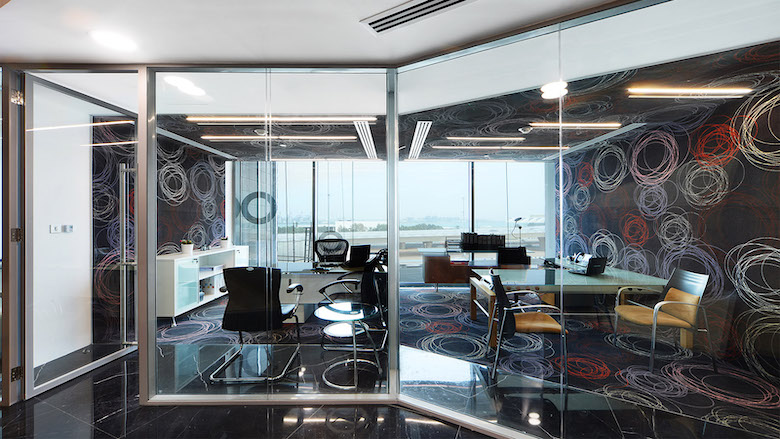
Table of contents
Introduction to Office Carpets
Why Carpeting Is a Great Choice for Office Space Projects
How to Choose the Right Office Carpets
Commercial Carpet vs. Hard Flooring
Acoustic Benefits of Carpet
Office Carpet Design - What Are Your Options?
Why Choose Carpet Tiles?
Custom Design Carpets For Offices
What Is the Price of an Office Carpet?
Understanding Carpet Properties
Do You Have a Current Office Project You Want to Talk About?
Office carpets are on top of the list for many businesses when choosing what kind of flooring the office should have. With brilliant design selections, great acoustic qualities and an abundance of other advantages that check all the right boxes, carpets for offices are always a solid choice for commercial flooring. Take it from us, however, that selecting the right office carpets for each of your projects may not be as easy as it appears. There are many fantastic options with so many factors to take into account. Therefore, we’ve put together a comprehensive guide to take you through the entire process of choosing the best office carpets.
Allowing you more freedom and flexibility in creativity and design than any other flooring material, office carpeting is the perfect pick for any office design project. With new high-velocity dye-technologies, custom carpet manufacturers provide you with the tools to create virtually anything on

Designing an office space can be a long process, part of which includes picking the perfect carpeting for the office. Choosing the right carpet for your next office-project requires you to assess the workspace and consider the multiple factors that can affect commercial carpet types. Here are a few questions to ask yourself when picking a carpet for office use.
First things first. Figure out what the office carpet’s life expectancy should be. A basic rule of thumb: the longer the lease, the higher quality of carpet required.
A quality commercial carpet has a life expectancy of 10-30 years and will remain in tip-top shape as long as it is properly maintained.
Next, determine how much each office area will be used in terms of foot traffic and furniture movement. Private offices and conference rooms may require lower levels of carpet resilience due to moderate use, while corridors and common areas typically receive heavy use. These are important things to consider when choosing the best office carpet for your office.
Read more for further details on
Lighting can impact your office carpets in more ways than one, changing the look and feel of your design completely. Taking office carpet samples on-site allows you to view the carpet under the office lighting, as well as bring your vision to life in the space it will operate. Your client is putting faith in you to design something spectacular, so why not give them a taste of your creative talent by bringing some office carpet samples to show in person.
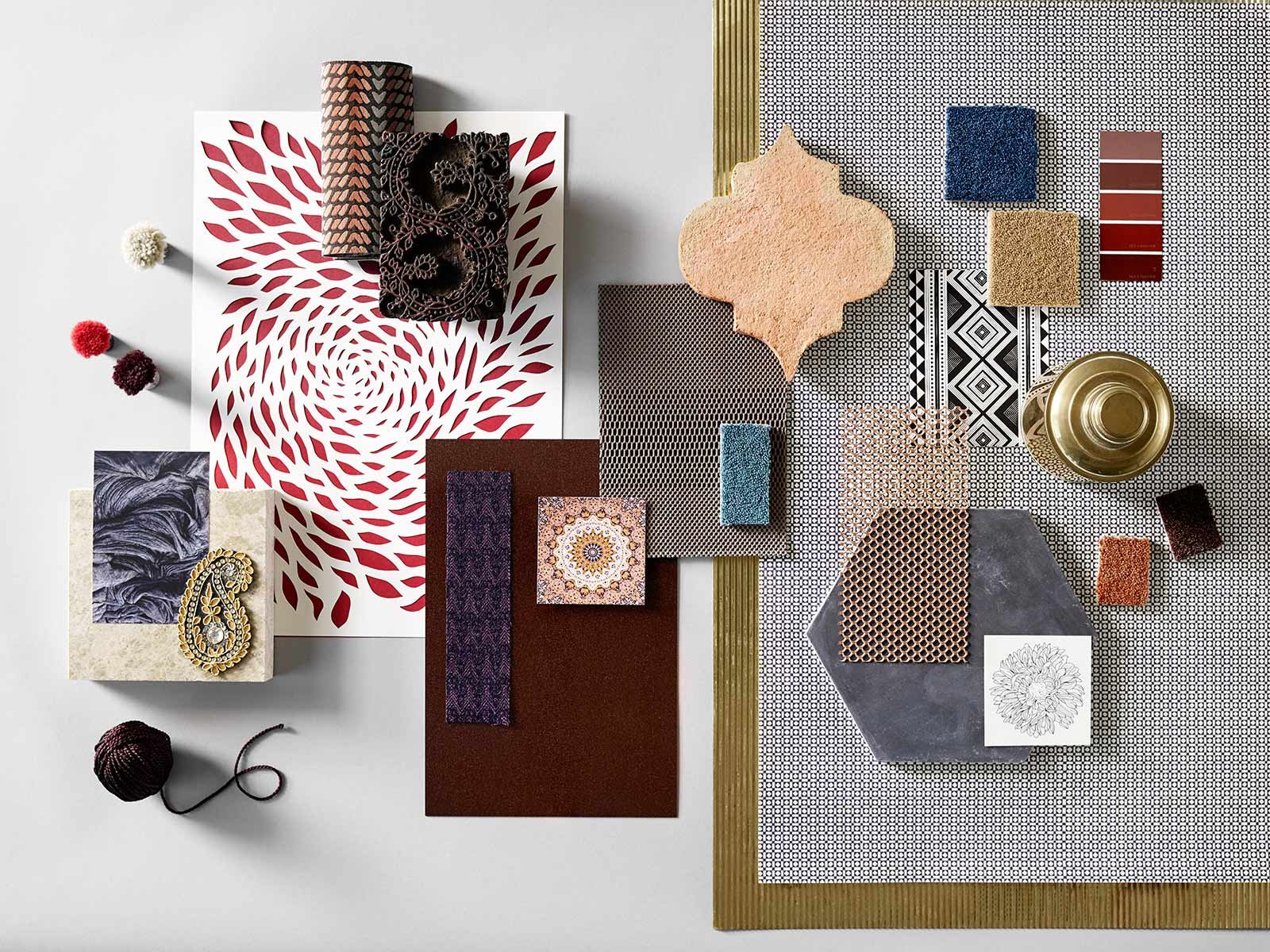
It's essential to select different carpeting for different areas, such as cafeterias and corridors, which foster heavy foot traffic and coffee drinkers. When someone inevitably spills their cup of coffee or carries in
Discovered a major stain on your carpets? Read this guide for expert advice on cleaning carpet stains.

Cushion backing improves comfort and carpet performance, as it absorbs the impact of foot traffic, making carpet
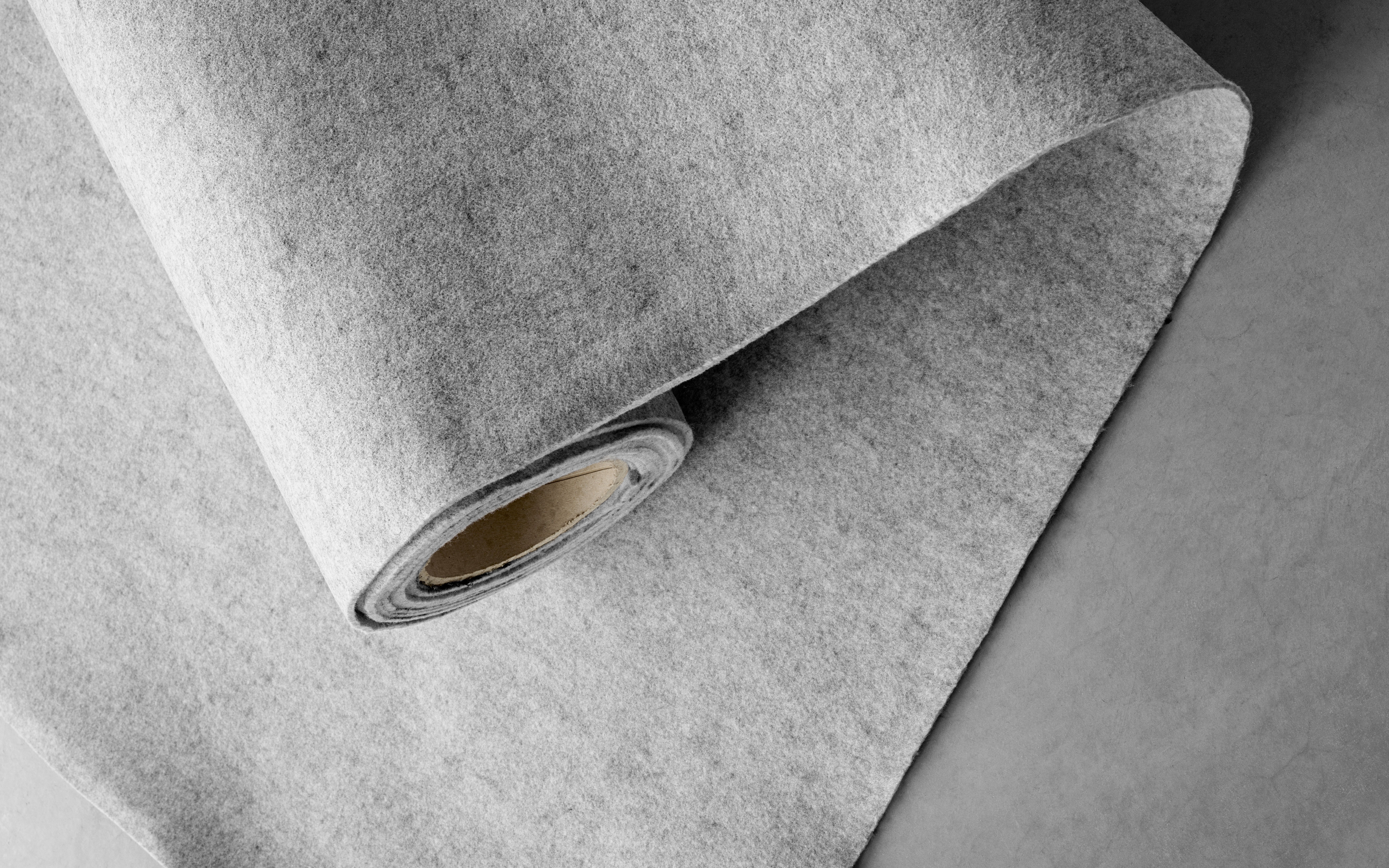
Preparing a detailed carpet placement plan can reduce costly mistakes and delays on carpet installations for large office environments. Have a supplier check over your flooring plan to ensure all components run smoothly.
Before installing your new office carpet, confirm all details at hand with your carpet supplier and office carpet installer prior to delivery. Have a logistics plan in place and take into account possible delays such as the 24 hour wait time for
Costly mistakes are common at the installation stage unless careful preparations are made. You don’t want this happening with your project. Instead, you want to be able to admire the stunning results.
There’s no denying that options such as hardwood, polished concrete or tiles can be a great choice for many flooring spaces, so, when and why might office carpets be the ideal option for one of your office design projects? What are the benefits of office carpets vs hard flooring options? Let's take a look.
In general, hard flooring options lack
Each carpet is a work of art and had it not been for the design freedom we were allowed with custom designs, we would have missed an extraordinary dimension in the rooms.

Working with a carpet manufacturer for commercial or domestic use provides you with the freedom to pinpoint exactly what you're looking for in your office carpet design. From vibrant
See how this office space took advantage of carpet design versatility here.
Turn your office project into an eco-friendly one by selecting a carpet manufacturer that has devoted itself to creating
Sustainability and environmental impact may also be of great importance to your client who may only want to use sustainable office carpets. If so, choose a carpet provider that has implemented recycling systems and sustainable processes like Cradle to Cradle. Some carpet manufacturers, such as E
If you aspire to work in an environmentally conscious way, but are unsure of what you need to make that happen, take a look at the 11 Things You Need to Look For When Talking Carpets and Sustainability.
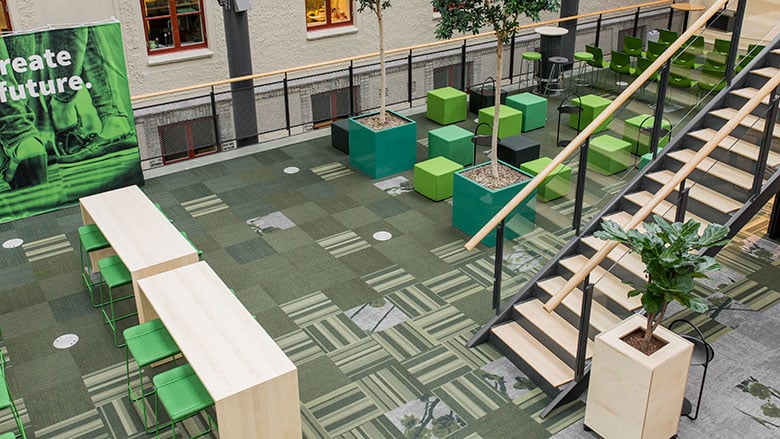
Carpeting is generally thought of as the less durable choice when it comes to flooring but through regular housekeeping and
Static electricity is a phenomenon which can cause danger in indoor environments. By deciding on a carpet with permanently anti-static and conductive
Office carpets can significantly improve the thermal comfort of interior environments. The
Office carpeting could lower energy bills, as it's able to reduce room temperature by 2-3 degrees Celsius without the room feeling colder. Carpets offer the same effect in colder environments by trapping the heat, making it a balancing factor throughout the year.
Office carpets provide a safe environment with a reduced risk of falls, slips
Hard surfaces reflect sound, causing open office layouts to become noisy and bothersome. The acoustical benefits provided by office carpets are essential in a workspace, as the carpet is able to reduce noise through absorbing sound - creating a workspace with
It's critical to consider the acoustics of a room when creating an interior design for an open office layout. In this next section, we will uncover the acoustic benefits that office carpets provide.
Carpet really is the base of the whole space. It acts as the first building block of a room. It's not just a colour vehicle, it's a sound deadening vehicle, a comfort vehicle as well. It softens a space immensely in no other way than any bit of furnishing can.
To fully grasp the importance of acoustic control, take a moment to
A study carried out by the Danish National Institute of Occupational Health indicates that more than half of all employees working in open space office environments are negatively affected by noise.
As an architect or a designer, a quality office carpet is your number one tool to improve the sound quality of an office space. The c
You must consider each area of the office to determine how much noise canceling properties will be necessary
For the best results in acoustic quality it is imperative to consult with your carpet provider, but in general do note that:
To gain a deeper understanding of the factors that make commercial carpeting the superior choice over hard surface flooring, see our guide on improving the sounds of a room.
So, you've made the decision to install commercial carpeting in your next office project? It's time to dive into the premium office carpeting design choices available to you.
Important decisions as to what type of carpet is most suitable for your project, will further impact circumstances such as delivery time, cost, quality, durability and, finally, design options.
Should you choose broadloom or commercial carpet tiles in your office?
Of course, a good carpet supplier will assist you along the way with expert advice, but the more you know yourself, the better you are able to understand and appreciate that advice and make informed decisions.
Without further ado, let's define carpet types and constructions:
Broadloom carpet (or wall-to-wall): Is manufactured in long, wide rolls and installed either directly to stick on the subfloor or laid on underfelt over the substrate flooring using tiny tacks. Broadloom carpets for offices present unlimited design options and a seamless canvas for custom designs. Despite the name, wall-to-wall carpet does not have to cover a whole room; the carpet can be easily installed in specific areas or integrated with another carpet or flooring type. Read our comprehensive guide on
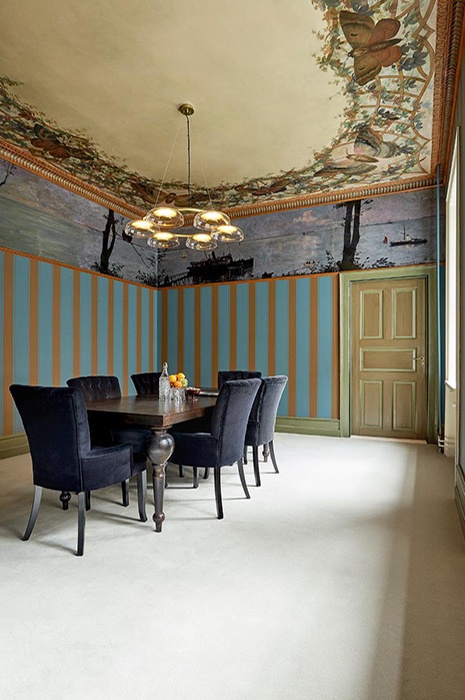
Carpet tiles: Small squares of carpet that can be laid in many versatile ways. Often cheaper than broadloom, carpet tiles for offices are also faster and easier to lay, saving both time and money. Wall-to-wall carpet certainly trumps carpet tiles for high-end projects, but for more casual office spaces, carpet tiles can often be a good option. Find out more about when you should use carpet tiles here or check out our comprehensive guide on carpet tiles.
Click here to browse through an impressive selection of carpet tiles with an abstract twist.
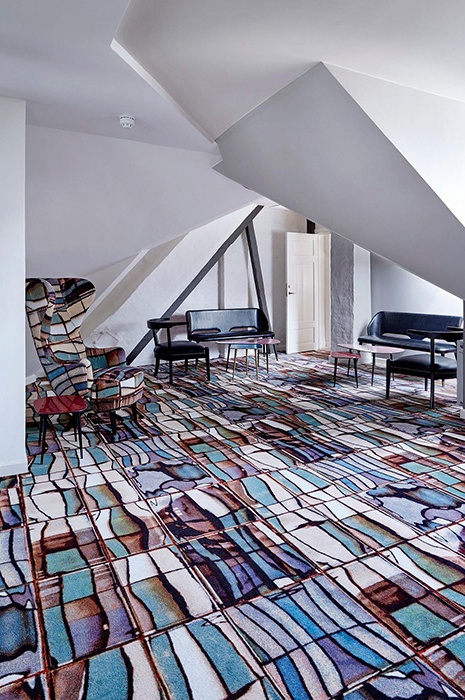
Tufted: 95% of commercial carpets on the market are tufted. Tufted carpets are known for a quick and easy installation process and a low price point. Tufted carpets produce great results in most applications, however, there are times when the superior quality and durability of woven carpets may be preferable.
Woven: Weaving was the production process of choice in the 1950’s, but due to the carpet’s remarkable quality and acoustic benefits, most carpet suppliers carry woven carpets today. Woven carpets are made up of materials such as 100% wool or wool blends. The quality and purity of the wool are important factors influencing the long-term appearance and durability of the carpet. The luxurious feel and elegant appearance of woven carpets make them an ideal selection for high-end projects.
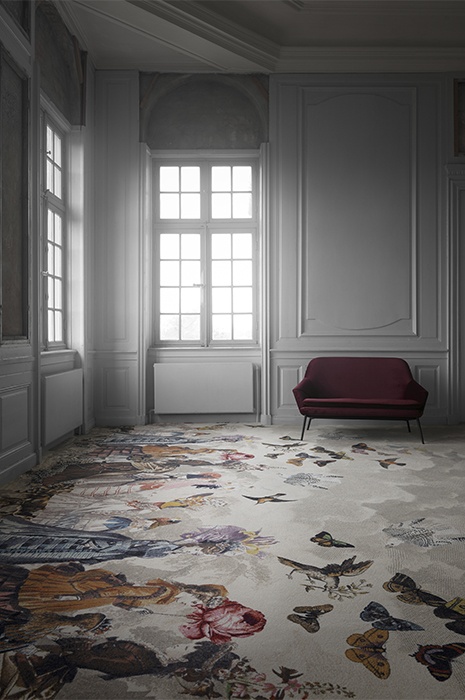
Needle punched: Needle punched carpet isn't recommended for general use as it lacks in design versatility and offers little in look and feel. However, this construction is an excellent choice for areas where moisture could be a problem, such as entryways.
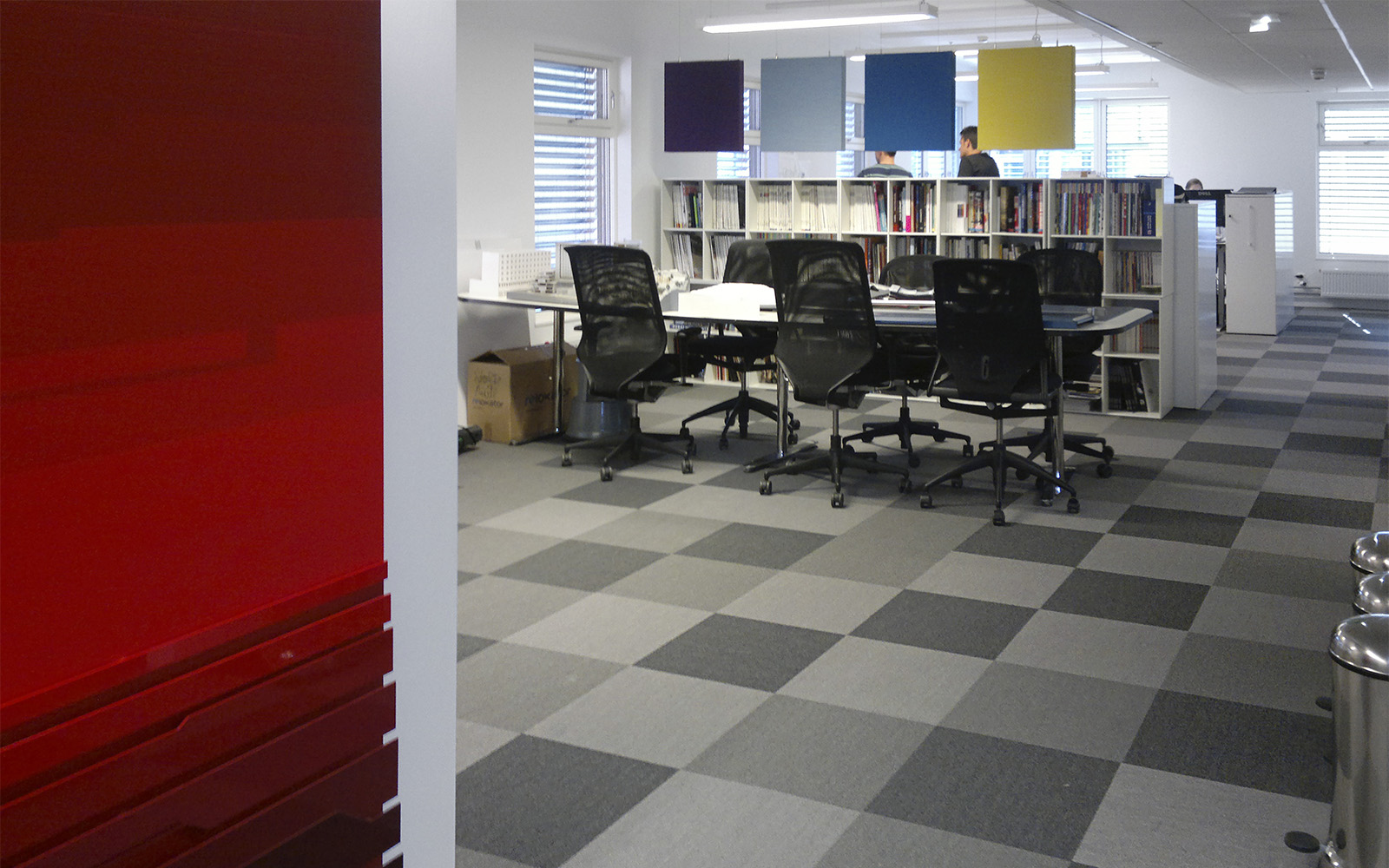
Broadloom, also known as wall-to-wall carpets, are essential for office projects where you wish to use large-scale patterning or are seeking a superior luxurious effect. The design versatility offered by wall-to-wall carpets is unmatched, as all results are breathtakingly seamless. Carpet tiles are equally good for most other office applications and offer a great alternative if the budget is tight, the timeline on your project is restrictive or regular maintenance and replacement is an issue. If you feel doubtful toward carpet tiles, read our next section, Why Choose Carpet Tiles, to understand their benefit in workspace settings.
Carpet tiles are growing in popularity among commercial use, including office use, and offer countless configurations to create different effects for your project design. With
If you feel like getting inspired, take a look at the incredible office carpet tile design cases from our E-book 10 Amazing Carpet Cases We Love.
Of course, the real clincher comes when the client wants a stunning flooring
Point out to your client that carpet tiles can be faster and easier to lay than most wall-to-wall carpets - and generate less waste in the process. Reduced time and little wastage serve to substantially reduce overall costs. In some instances, office carpet tiles can be laid with furniture in place. Not an ideal situation, perhaps, but it can be done if time and lack of disruption is a real deal breaker for the client.
It should be noted, if your client wants the time, cost and waste savings that carpet tiles offer, but prefers to work with wall-to-wall carpets, this can certainly be achieved by selecting a wall-to-wall carpet in a standard design, with standard specifications.
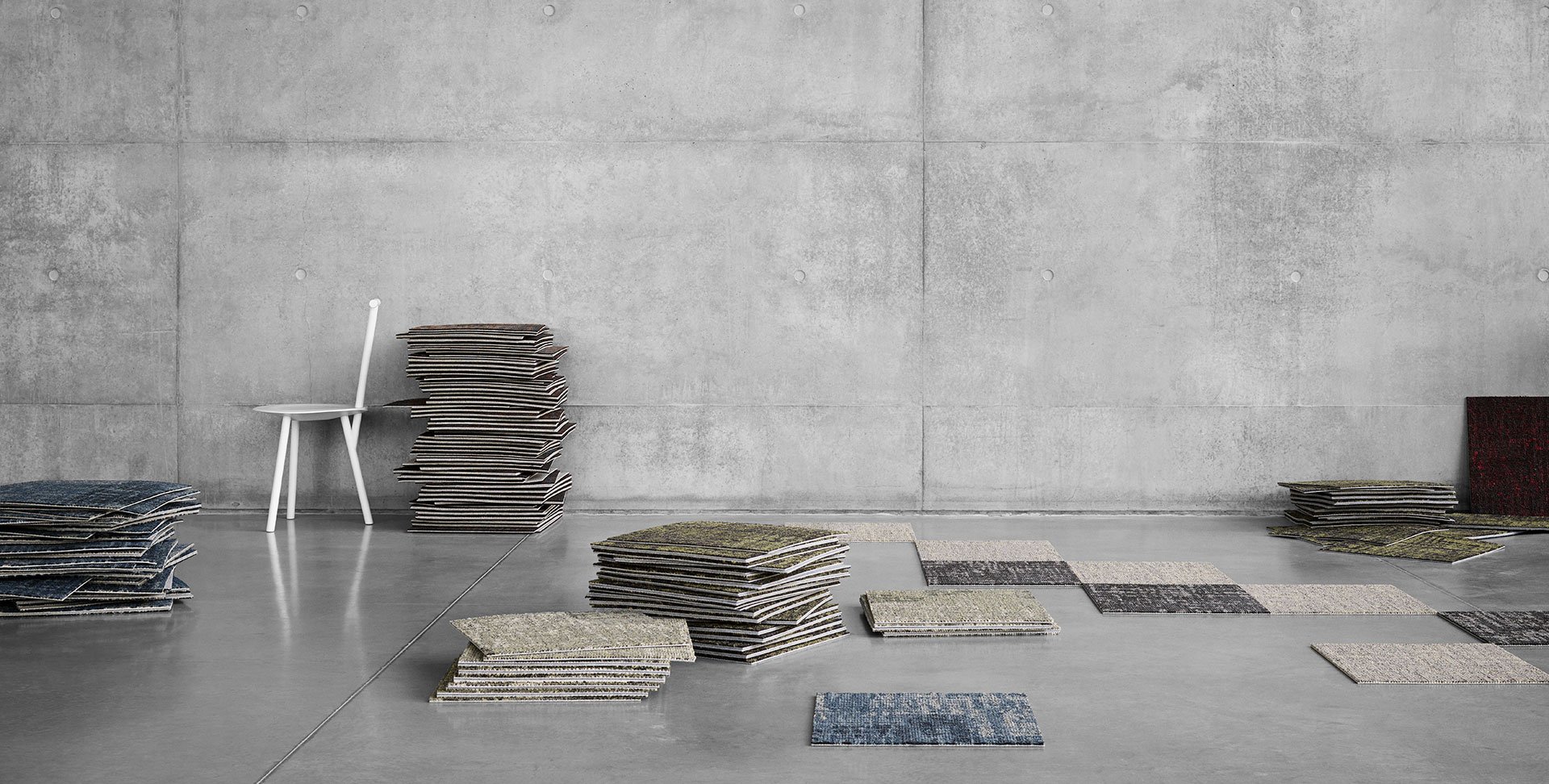
Naturally, practical advantages can also sway a client’s flooring decision so be sure to point out that:
By this stage of the discussion, you should have the client right on
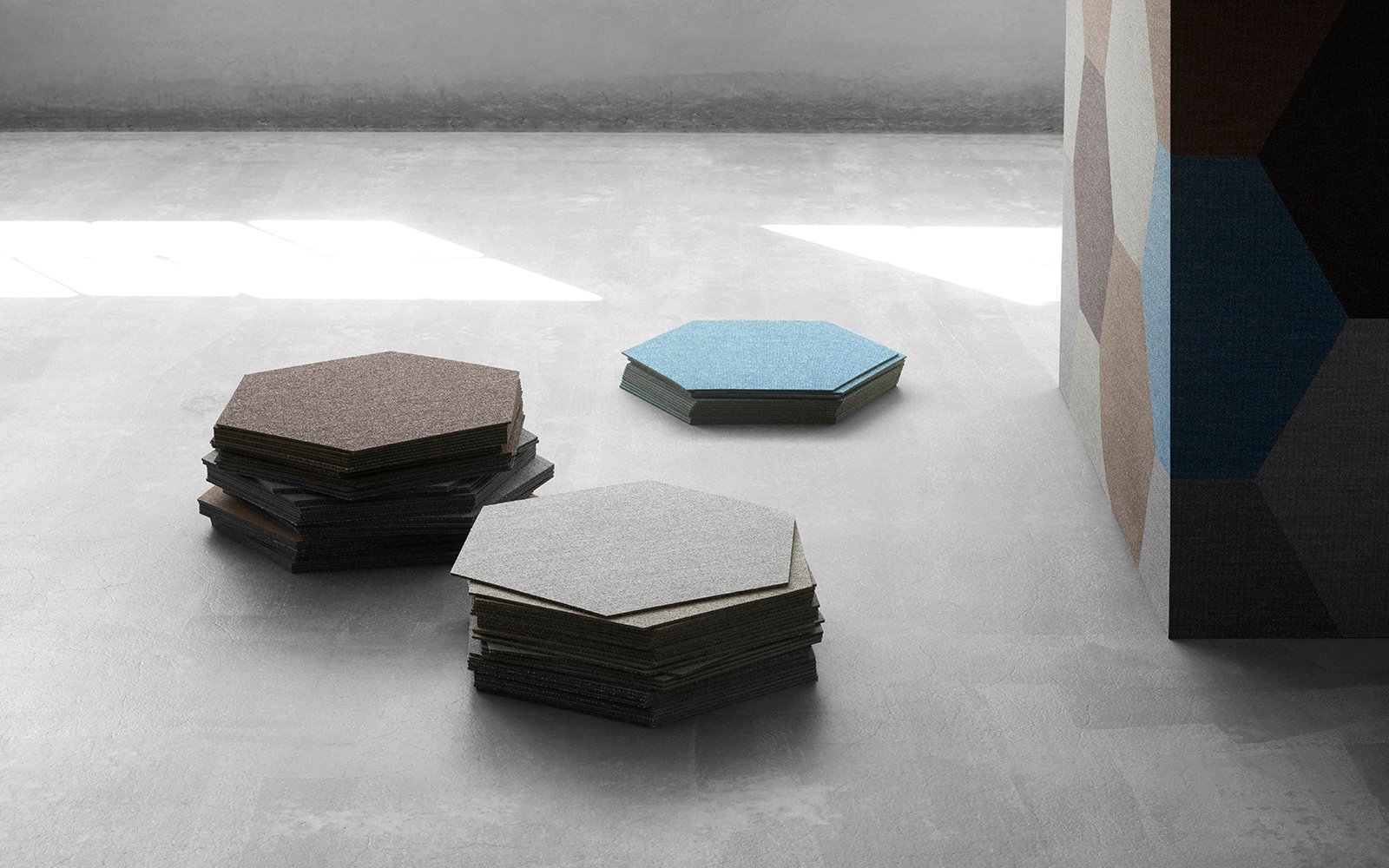
Custom designed office carpets work as an advantage for designers and architects who want to think outside the box when telling a brand’s story. Creating a custom designed carpet for your workspace project empowers you to call all of the shots and work with limitless options in terms of
A carpet is a pen. A paintbrush. A notebook. A canvas. If you want your design to tell a story, carpet can help you tell it.
Carpets aren't just for floors. Take the design up the wall.
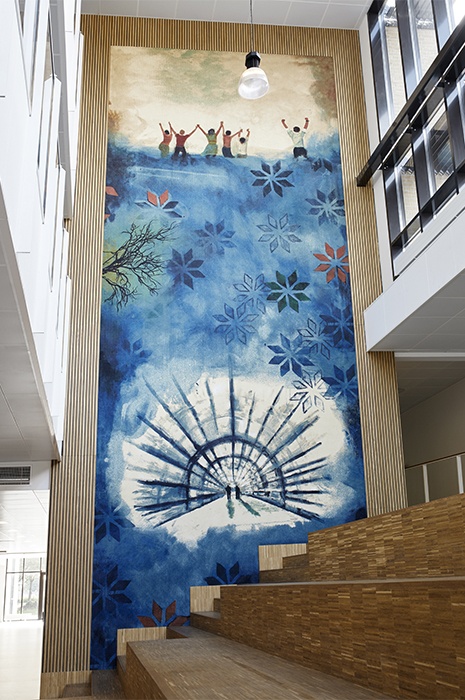
Use carpet tiles to mark off distinct areas within large office spaces.
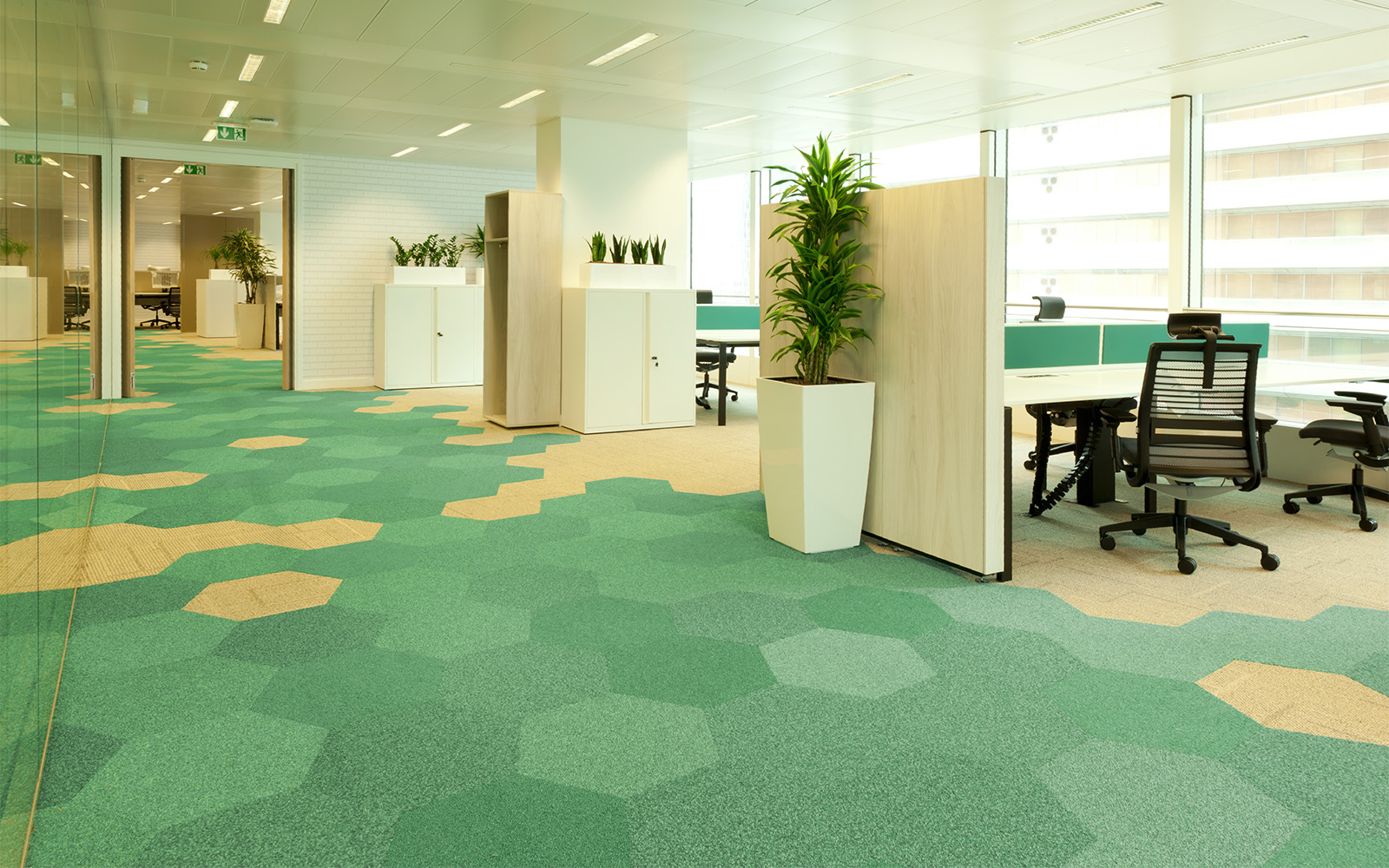
Turn

The flexibility provided by Ege Carpets’ manufacturing process made it possible to create non repetitive designs which were fixed on the floor as well as on the walls and ceilings, creating a very peculiar office look as well as enhanced acoustic performances.
Need some design
Minimalism has expired and with that comes a new set of office carpet trends full of extroverted designs and
1. The new opulence: Highly decorative interior carpeting with exotic jewel-toned patterns, on top of more exquisite patterns.
2. Biophilic design: Patterns mimicking nature and a healthy environment.
3. Floor power: Bold
4. Geometry lessons: Custom patterns through piecing together an endless variety of carpet tile shapes.
To get a better understanding of what these trends look like in real carpet project examples, see Chapter 7 of our E-book The Architects Guide to Choosing the Right Carpet.
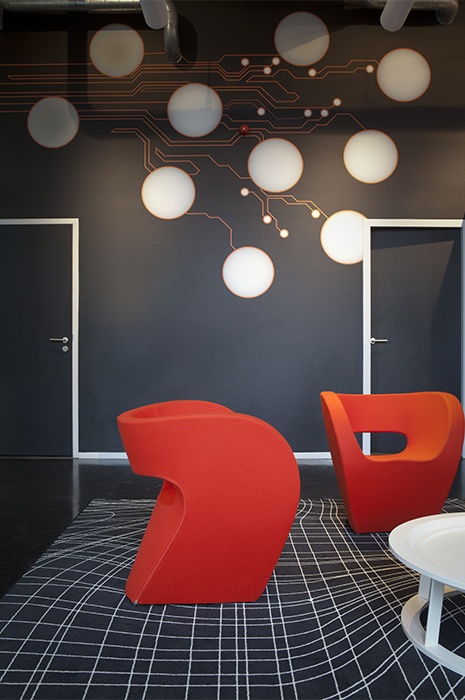
The cost of office carpets depends on the exact specifications of quality type, installation, construction, etc. If you want to find out how much it would cost to install carpets in an office, you have to consider the following variables:
Guarantee yourself a satisfied client by making sure you ask them these 9 questions before choosing your carpet face or carpet backing.
For a more extensive overview on how to estimate the price of a carpet project and how to keep costs and waste to a minimum, check out our guide, “How to Run a Profitable Carpet Project.”
As discussed in the Commercial Carpets vs. Hard Surface Flooring section, there are many variables or properties that accompany a carpet next to physical appearance. With hundreds of properties to contemplate, it's up to you to consult with your client and decide which properties are most essential to include in their office environment.
Based on the properties most required in your project, look to certifications and classifications to narrow in on which carpet face and carpet backing will be the most appropriate choice.
As previously stated, EN 1307 is a standard test and classification that rates long-term appearance retention. For a carpet to become certified it must be tested to identify performance as well as
Class 31: Moderate usage. Suited for storage rooms, as well as conference and meeting rooms.

Class 32: Normal usage. Certified for commercial projects such as office spaces. 
Class 33: Heavy usage. Suited for areas with large amounts of traffic and spilling and soiling, like office entry areas.

To qualify for ISO 10361, a carpet will undergo the Vettermann Drum test, which detects how much a carpet will change based on heavy foot traffic, making this test absolutely necessary for carpets in areas like entrances and walkways. The test provides results on a 1-5 scale, with 1 being a heavy change and 5 providing no change.
In most European countries, this symbol is required before a carpet can be used in an escape route. 
This symbol means a carpet has been permanently tested for castor chairs, which is often a key quality when choosing carpet for office settings. 
This carpet is suitable for stairs. 
This carpet is permanently anti-static. 
This carpet is suitable for heated floors. 
To view additional symbols, properties, classifications and tests click here to visit chapter 10 of an Architect’s Guide to the Right Carpet.
Please don’t hesitate to get in touch with us for assistance with your office project. From idea to unique carpet solution - no matter where you are in the process - we’d be delighted to help!
Design inspiration delivered straight to you